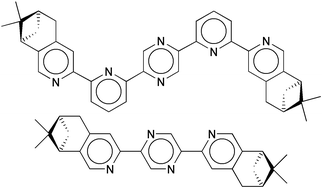New chiral pyrazine-based ligands for self-assembly reactions
Abstract
The syntheses of two families of ditopic N-heterocyclic ligands are described. All the compounds contain a central pyrazine ring connected to peripheral pyridine or bipyridine moieties, providing bipyridine- and terpyridine-like binding sites, respectively. Annellated terpene fragments render these metal chelators chiral. Thus they face the challenge of introducing stereoselectivity into the formation of chiral, multinuclear co-ordination species.


 Please wait while we load your content...
Please wait while we load your content...